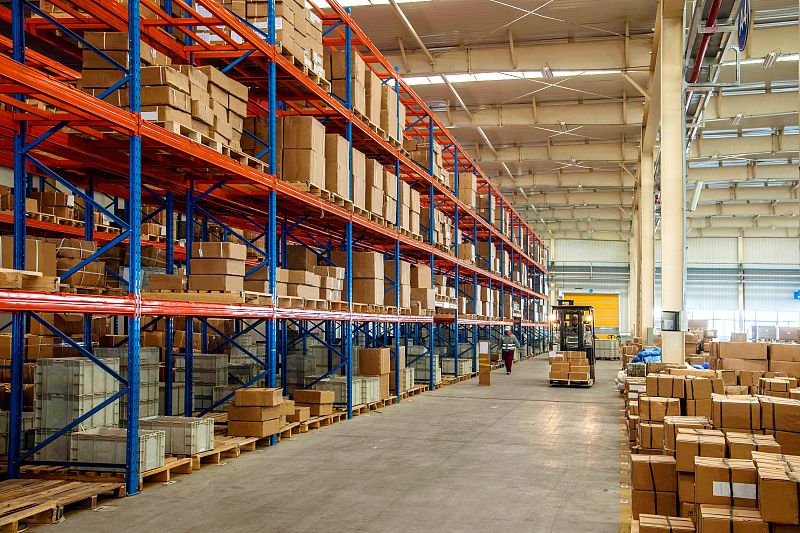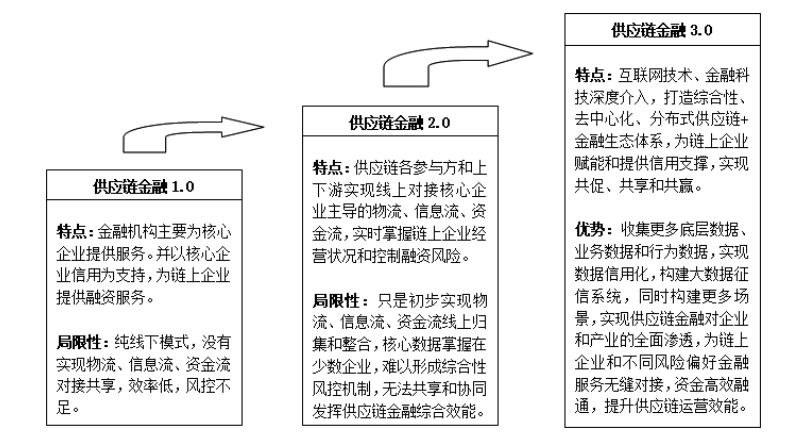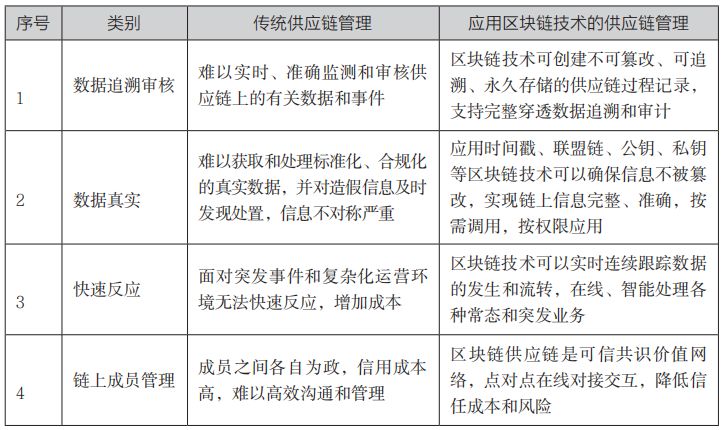Blockchain + "Made in China": How to improve the financial vitality and effectiveness of supply chain in a block
Source: "Blockchain Finance · Technological Change Reshapes the Financial Future"
Produced by: Blockchain Base Camp
Before entering today's topic, let's introduce a professional term: LPI (Global Supply Chain Performance Index).
The LPI is an international index issued by the World Bank every two years to gauge the level of logistics in a country or region and its ability to participate in global supply chains to support its supply chain management.
- Proficient in Filecoin: System Startup
- R3 CEO David Roth: Facebook's approach to Libra is simply "naive and stupid"
- Coinbase Report: Read the US cryptocurrency industry
As China’s second largest economy, how much does its LPI account for in the world? The answer is: 26th.
This result is indeed unexpected. As the second largest economy in the world, China ranks unsatisfactory in terms of supply chain management. So where is the problem?
We have learned that in recent years, driven by the wave of Industry 4.0, the manufacturing industry has ushered in a new development machine – intelligent manufacturing, which is the core of a new round of industrial revolution, the commanding heights, breakthroughs and breakthroughs of manufacturing innovation drive, transformation and upgrading. The main direction is to achieve innovation and intelligence in the entire manufacturing value chain.
From the perspective of the supply chain, suppliers in the upstream and middle of the supply chain are strongly dependent on the core enterprises, and the bargaining position is weak. In order to obtain long-term business cooperation of core enterprises, the method of credit sales is often adopted.
Through credit sales transactions, core companies are able to manage payables and manage their wealth, and increase cash flow, but suppliers are under pressure from increasing cash flow due to large amounts of accounts receivable.
For core companies, despite the increased demand for outsourcing in manufacturing and distribution, the financing bottlenecks of suppliers and distributors are obvious, the financial costs are rising, and the decline in gross profit has led to a weakening of their enthusiasm for cooperation with core companies.
At the same time, core enterprises will also face problems such as promoting sales and increasing credit exposure, affecting the financial statements of receivables, and crowding out small suppliers by large suppliers, which will lead to the deterioration of the negotiating status of core enterprises.
At this time, the development of supply chain finance to foster the sound development of the entire industrial chain has become an urgent issue, and the optimal allocation of upstream and downstream resources in the supply chain has become a top priority.
First, the supply chain is more complicated
Traditional supply chain management is in trouble
Let's first take a look at the problems that traditional supply chain finance is currently facing.
1.1 Lack of supply chain management strategy awareness and trust mechanism
Some small and medium-sized enterprises have insufficient understanding of supply chain management, and they are used to fighting each other. They have strengthened their local interests too much. Supply chain management activities are mostly limited to internal. It is difficult for supply chain members to form value chains. Cooperation is mostly loose and lacks effective coordination. Constraint mechanism.
Although supply chain management requires extensive cooperation among enterprises on the chain, due to the imperfect construction of social credit system, the trust mechanism between enterprises on the chain is fragile, and it can only rely on the authority of core enterprises to enforce control, which in turn leads to the rights and autonomy of small and medium-sized enterprises in the chain. Restricted power to curb the development of SMEs. In addition, SMEs have limited operating scale and capabilities, and their credibility is low, which also increases the difficulty of credit management in the chain.
1.2 SMEs have low ability to integrate and utilize information resources, and information sharing collaboration lags behind
The supply chain operation process is the unification of logistics, business flow and information flow. It involves a number of production, transportation, sales and other enterprises and users. It has the characteristics of cross-regional and inter-temporal cooperation. It relies on information sharing and needs modern information technology. Integration of the supply chain, but the general informationization of SMEs is relatively backward, and the interoperability is poor. It is difficult to effectively realize information exchange and share and ensure the smooth operation of the supply chain system.

1.3 The scale, diversification and market coverage of enterprises have increased, making the difficulty of supply chain management increase simultaneously.
If the upstream and downstream of the supply chain are large (the number of upstream and downstream enterprises involved in such a giant like the US may be tens of thousands), the difficulty of the overall control of the supply chain by the core enterprises will increase accordingly, resulting in efficiency degradation and management costs. Soaring. The Internet era has spawned a global division of labor, product production and supply cycle is characterized by complexity, fragmentation, customization, and decentralization. The supply chain is continuously extended, the chain enterprises are increasing, and information asymmetry will lead to ineffective costs and rent-seeking. Speculative chaos, traditional supply chain technology is difficult to achieve real-time, efficient and penetration.
1.4 Insufficient information traceability, flying on the false arbitrage information chain
Since the enterprises in the supply chain are independent market entities, there is only a trading relationship and interest relationship between enterprises. It is easy to have information asymmetry that is difficult to verify the authenticity. The price of raw materials, spare parts and other supplies and terminal products is distorted, resulting in counterfeit and shoddy goods. Raise money, even money laundering and other illegal activities.
1.5 Real-time, complete, effective and realistic data acquisition and processing on the chain is difficult
Since the enterprises in the supply chain only have business relationships based on a certain raw material, a certain spare parts, a certain service, etc., the information systems between the enterprises are independent and dispersed, and even the system may not be interconnected due to trade secrets. Raw materials, procurement, production, logistics, sales and other information can not be shared and unified disposal, resulting in information distortion, big data, long data value is idle, shelved, transaction, payment and audit costs increased.
Second, the main challenges facing traditional supply chain finance
The core enterprises in the supply chain often use bills and other means to write off other companies in the chain, and the bills cannot be split and circulated, which brings great financial pressure to the SMEs in the chain. The essence of supply chain finance is to provide financing channels for small and medium-sized enterprises that are located upstream and downstream of core enterprises.
Through the endorsement of core enterprise credit endorsements and upstream and downstream transactions, financial institutions can effectively control risks and provide financial services (buyers financing, seller financing and logistics financing) for SMEs in the supply chain. 
Main financing mode of supply chain finance
2.1 Core corporate credit risk
The core enterprise grasps the core value of the supply chain and plays an important role in the integration of supply chain logistics, information flow, and capital flow. Based on the core enterprise's comprehensive strength, credit rating and its supply chain management capabilities, degree and effectiveness, financial institutions carry out credit and credit business activities for SMEs in the chain. Once there is a problem with the core enterprise credit, it will inevitably spread to other enterprises in the chain, affecting the overall security of supply chain finance.
First, if the real strength of the core enterprise cannot bear the guarantee effect on the entire supply chain finance, the core enterprise may exceed the tolerance limit due to the credit bundling cumulative debt, causing the supply chain to have an overall redemption crisis.
Second, when the core enterprises encounter market unfavorable conditions, they may conceal their own and the business information of the parties on the chain, and even collude with fraudulent financing, use the strong position requirements and the enterprises in the organization chain to finance the financial institutions, and then use the financing. In extracorporeal circulation, financial institutions face malicious loans and adverse risks.
Third, due to the mismatch between the upstream and downstream accounts of the core enterprises, the cash recovery cycle is lengthened, resulting in a long period of accounts receivable for upstream suppliers, which is subject to liquidity pressure. For the second- and third-tier multi-level suppliers, it is necessary to ease the financial pressure through financial institution loans, but the financial institutions are cautious about the credit ratings of such small and medium-sized suppliers, which makes it difficult for small and medium-sized suppliers to raise funds, raise financing, and transmit pressure to supply. chain.
2.2 Credit risk of upstream and downstream enterprises
Although there are core enterprise guarantees and multiple credit support technologies to reduce the risk of non-performing loans, the financing parties of supply chain finance are mostly small and medium-sized enterprises. Their management is not perfect, their assets are small, their operations are not standardized, their production and operation are unstable, and their ability to resist risks is high. Problems such as weak and trustworthy binding are still strong. At the same time, the financing party is also affected by various factors such as the overall operational performance and credit quality of the supply chain, the cooperation status of upstream and downstream enterprises, and business transactions. Any factor may lead to credit risk.
2.3 Trade background authenticity risk
In supply chain financing, financial institutions use the real trading relationship of the participants in the supply chain to use the accounts receivable, prepayments, and inventory generated by the transaction process as pledge/collateral to provide financing services for upstream and downstream enterprises in the supply chain. . The inventory behind the real transaction, accounts receivable, and core enterprise replenishment guarantees are the fundamental guarantee for self-repayment of credit financing.
In the event of a counterfeit trade contract, the existence/legality of the receivables corresponding to the financing, the pledge of the pledge/the quality of the pledge, and the fictitious transaction between the buyer and the seller, the credited financial institution faces enormous risks.
2.4 Business Operational Risk
Supply chain finance reduces the risk of non-performing risks and builds a stable source of repayment by designing self-compensating transaction structure, introducing independent third-party supervision, and real-time monitoring of supply chain operations, and placing high demands on the rigor, perfection and standardization of business operations.
2.5 Logistics Supervisor Risk
In order to give full play to the professional advantages of the regulators in the field of logistics and reduce the cost of pledge loans, financial institutions generally outsource the supervision of pledges to logistics enterprises, and they implement pledge supervision on their behalf. However, after this business is outsourced, financial institutions may reduce their understanding of pledge ownership information, quality information, and transaction information dynamics. Due to information asymmetry, the logistics supervisor may also act to harm the interests of financial institutions for the sake of greater self-interest, or the loss of pledge due to improper management and uncompromising responsibility.

For example, some enterprises collude with logistics warehouse company staff to issue physical warehouse receipts or warehousing vouchers for fraudulent loans; some enterprises falsify pledges and warehousing registration forms, and arbitrarily extract and dispose of pledges without the consent of financial institutions; The regulator did not perform its duties as a supervisor, resulting in a non-conforming quality or missing value.
2.6 Risk of pledge assets
The pledge asset is an important guarantee for the financial institution to make up for the loss when the borrower defaults. It is also the first source of repayment when the non-performing loan occurs. The asset status directly affects the credit recovery cost and the borrower's willingness to repay. If the actual value of the pledge asset is lower than the repayment amount, the borrower's motive for default may increase. The pledge assets are mainly divided into two categories: accounts receivable and inventory financing.
The risk of receivables and pledge assets mainly lies in the credit status of the accounts receivable counterparty, the age of accounts receivable and the possibility of refund. The main risks of inventory financing are whether the pledge is missing, whether the price fluctuates greatly, whether the quality is different, and whether it is easy to liquidate.
Third, financial technology empowerment supply chain finance
3.1 Blockchain + Supply Chain Finance
Traditional supply chain finance is basically offline and manual, including verifying the trade background, corporate credit, and confirming accounts receivable. The operation efficiency is low and the cost is very high. The introduction of Internet and financial technology can greatly improve efficiency and reduce costs, and effectively prevent risks.
Taking the blockchain + supply chain financial solution released by Tencent as an example, the blockchain is used to connect the participants in the supply chain. The complete and true record can be achieved based on the issuance, circulation, split and redemption of core accounts payables. To reduce the financing costs of enterprises on the chain and improve the security of the entire process of supply chain finance.
According to Tencent's solution, it is assumed that a certain core company's accounts payable is set as a debt certificate, and the debt certificate is digitized by the blockchain technology, and the distributed ledger records its circulation and cannot be tampered with.
As long as the core enterprise commits the money, the creditor (upstream enterprise) can split the debt certificate, transfer it to the creditor's supplier and other channels, and so on until the debt certificate is split. Obviously, this debt share financing method is more efficient and has a wider coverage.
3.2 Fortune All-Link System
Foton Motor and Ping An Bank jointly launched the “Fojin All-Link System”, a blockchain supply chain financial platform. Foton Motor has a number of suppliers of parts and components, more than 2,000 dealers, more than 1,000 service parts suppliers, more than 200 advertising and logistics companies, and a large number of supply chain companies.
The Fukun All-Link system establishes an open, transparent and efficient distributed network in a node-controllable manner, covering the supply chain core companies (Fukuda Motors), suppliers, banks and other financing participants, which will flow, cash flow, logistics, The information flow is integrated with zero time difference to improve the financial efficiency of the supply chain and increase the viscosity of the enterprises on the chain and the core enterprises.

The main development stage of supply chain finance
Fourth, the alliance chain + private chain:
Open the first kilometer of supply chain finance
The supply chain is an early application of blockchain technology, with high maturity and concentration. The main advantages of blockchain technology applied to the supply chain. For example, the container shipping giant Danish Maersk Group has built a marine insurance blockchain platform. Wal-Mart uses blockchain technology to track the whole process of pork production and sales. The US UPS Express Group has built a blockchain freight alliance, and HNA Logistics Group has created a smart container digital platform. .
For another example, in December 2018, the IEEE and Ant Financial Services cooperated to prepare the "Block Chain Standards in Supply Chain Finance." This is the IEEE's first financial industry blockchain standard, which defines a common framework for supply chain finance based on blockchain, role models, typical business processes, technical requirements, and security requirements. IEEE, collectively known as the Institute of Electrical and Electronics Engineers, is the world's largest non-profit professional technology society, and its academic and international standards are recognized worldwide.

The main advantages of blockchain technology applied to the supply chain
In addition, the national macro-policy is also relatively supportive. For example, the “Guiding Opinions of the General Office of the State Council on Actively Promoting Supply Chain Innovation and Application” proposes to use the emerging technologies such as blockchain and artificial intelligence to establish a credit evaluation mechanism based on the supply chain.
to sum up
Supply chain economic activity is an increasingly complex system, similar to the food chain "plant – sheep – wolf – lion", every link is indispensable, if the lion is extinct, the wolf will grow wild, and soon the sheep will be eaten, and finally the plant will grow wild The wolf will also starve to death. Therefore, enterprises in the supply chain should have equal rights and equal contract cooperation and profit sharing regardless of size, strength or weakness. Otherwise, once this food chain is out of balance, all enterprises will suffer. Therefore, the blockchain to improve the financial vitality and efficiency of the supply chain requires us to accelerate the pace, bearing in mind the lessons that will be beaten behind.
We will continue to update Blocking; if you have any questions or suggestions, please contact us!
Was this article helpful?
93 out of 132 found this helpful
Related articles
- QKL123 market analysis | "The first block of the blockchain" breaks; Bitcoin is at risk (1122)
- Central Bank Shanghai Headquarters issued a document: increase supervision and prevention, and combat virtual currency transactions
- DC/EP makes the US panic? Former government officials organize digital currency war exercises to discuss countermeasures
- Case Study: Most of the victims of cryptocurrency scams come from these four countries. There are three common ways.
- After the listing of Jianan Technology, it broke on the same day, the main business is single, the performance is less than the industry leader 10%
- The $5 trillion brokerage giant will be born, and the bitcoin price may be unexpectedly affected.
- $ 383 million! The Korean government will provide huge incentive funds for blockchain development






